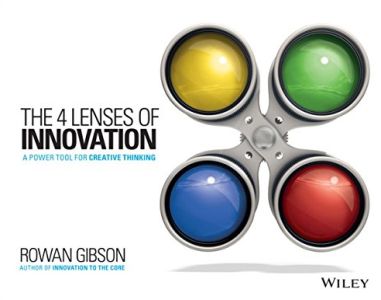Join getAbstract to access the summary!

Join getAbstract to access the summary!
Rowan Gibson
The 4 Lenses of Innovation
A Power Tool for Creative Thinking
Wiley, 2015
What's inside?
Four ways to look at innovation provide a simple, workable tool for the creative process.
Recommendation
Rowan Gibson, author of Innovation to the Core, provides a manual full of graphics, illustrations and photographs, with numerous pages tinted different shades to suggest that you can change how you see even ordinary things. Gibson proposes a system of innovation that incorporates various models of the human brain. He provides a broadly applicable set of tools to help you innovate by using four points of view or lenses: “challenging orthodoxies,” “harnessing trends,” “leveraging resources” and “understanding needs.” His examples are numerous and vivid. The clear style and jazzy – though sometimes a bit busy – design elements make Gibson’s ideas easy to apply. getAbstract recommends his guidebook to those seeking a boost in their creativity and ability to innovate, and to readers looking for tools to share with their entire organization.
Summary
About the Author
Rowan Gibson, co-founder of InnovationExcellence.com, also wrote Innovation to the Core.

















Comment on this summary